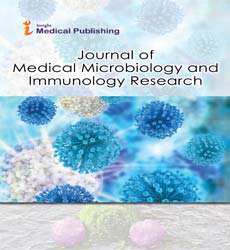ISSN : 2634-7164
Journal of Medical Microbiology and Immunology Research
Study of the marketed herbal drug for its immunomodulatory and antibacterial effect on bovine subclinical mastitis
Devyani Dave*
Saurashtra University, India
Received Date: 2022-07-14 | Accepted Date: 2022-07-20 | Published Date: 2022-07-27
Abstract
Antibiotics have been in use in the treatment of bovine mastitis since decades; however, their use is associated with cost issues and human health concern. Use of herbal drugs does not generally carry these disadvantages. Many plants/herbs have been evaluated in the treatment of bovine mastitis with additional property of immunomodulation in affected mammary gland. Present study was designed to evaluate a topical herbal drug in two breeds of cattle for its invivo immunomodulatory effect on cytokines production and antibacterial activity in bovine subclinical mastitis. The response to treatment was evaluated by enumerating somatic cell count (SCC), determining total bacterial load, and studying the expression of different cytokines (interleukin IL6, IL8, IL2, granulocyte macrophage colony stimulating factor, interferon (IFN)–γ and tumor necrosis factor TNFα. The pre and post treatment SCC in mastitic quarters statistically did not differ significantly, however, total bacterial load declined significantly from day 0 onwards in both the breeds. Highly significant differences (P < 0.01) were observed in all the cytokines on day 0, 5, and 21 post last treatments in both the breeds. The expression level of all the cytokines showed a significant increase on day 5, while a decrease was noticed on day 21 in both the breeds of cattle. The comparison of cytokine expression profiles between crossbred and Gir cattle revealed a significant difference in expression of IL6 and TNFα. However, other cytokines exhibited a similar pattern of expression in both breeds, which was non significant. The topical herbal drug exhibited antibacterial and immunomodulatory activities in subclinical mastitis and thus the work supports its use as alternative herbal therapy against subclinical udder infection in bovines.
Open Access Journals
- Aquaculture & Veterinary Science
- Chemistry & Chemical Sciences
- Clinical Sciences
- Engineering
- General Science
- Genetics & Molecular Biology
- Health Care & Nursing
- Immunology & Microbiology
- Materials Science
- Mathematics & Physics
- Medical Sciences
- Neurology & Psychiatry
- Oncology & Cancer Science
- Pharmaceutical Sciences
